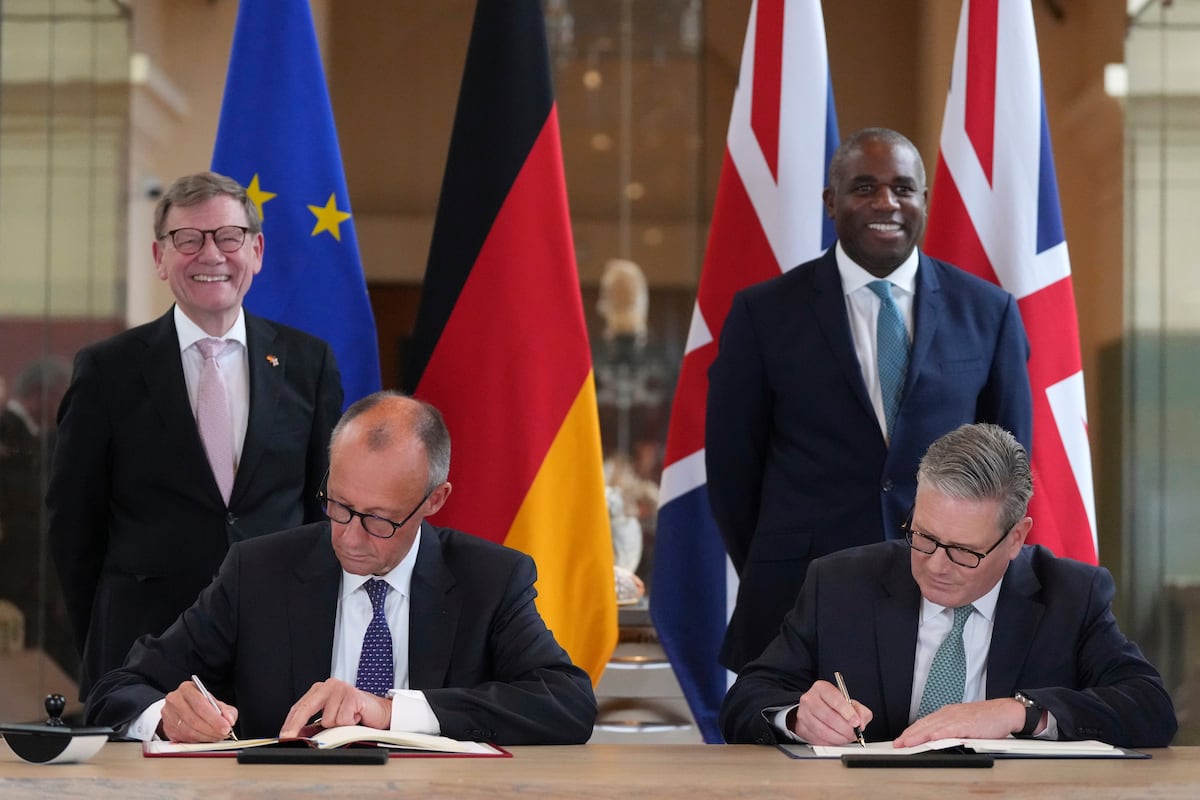- Arvind's Newsletter
- Posts
- Arvind's Newsletter
Arvind's Newsletter
Issue No. #1145
1.India’s core sector output grows 1.7% in June: Mint
The output of eight core infrastructure sectors, which account for two-fifths of India’s industrial output, expanded by 1.7% in June, according to provisional data released on Monday by the commerce ministry.
The production of steel, cement and refinery products recorded positive growth in June, the ministry said. Growth in May was revised to 1.2% from a provisional 0.7%, while it was 5% in June last year.
2.Automobile exports rise 22% in Apr-June on record shipment of PVs: Business Standard
Automobile exports from India rose 22 per cent year-on-year in the April-June quarter driven by record shipment of passenger vehicles and robust growth in segments like two-wheelers and commercial vehicles, according to industry body SIAM.
Passenger vehicles saw the highest-ever exports in the first quarter at 204,330 units, a growth of 13 per cent compared to 180,483 units in the same period last year.
Maruti Suzuki led the PV segment, shipping nearly 96,000 units – that’s a 47% market share. Hyundai followed, with a 13% rise in exports. Two-wheeler and three-wheeler exports grew by 23% and 34% respectively.
3.Titan to acquire 67% stake in Gulf retailer Damas Jewellery for $283 million: Economic Times
Following the acquisition, Titan will have an option to acquire the remaining 33 per cent stake after December 31, 2029.
CK Venkataraman, Managing Director of Titan, said, “With the Damas acquisition, Titan Company is stepping out from its diaspora focus into other nationalities and ethnicities. Damas is a prestigious brand revered in the GCC markets for its product innovation, quality and customer experience.”
4.Around 55 pc of total GCCs in India in Bengaluru, Hyderabad, Chennai: Mint
Bengaluru, Hyderabad, and Chennai together have 922 global capability centres (GCCs), around 55 per cent of the total such facilities in India, according to Vestian.
US-based real estate consultant Vestian stated that India houses nearly 1,700 GCCs spread across Tier-1 and Tier-2 cities, accounting for around 53 per cent of the about 3,200 GCCs worldwide.
According to Vestian, India's top six cities -- Bengaluru, Hyderabad, Chennai, Delhi-NCR, Mumbai, and Pune -- account for 94 per cent of the total number of GCCs in the country.
5.India pushes arms exports after Pakistan clash showcases weaponry: John Reed and Krishn Kaushik in Financial Times
“It may be no coincidence that two months after the Indian armed forces launched drones and missiles deep into Pakistan during a brief but fierce military assault, the country’s defence industry is making a push into overseas markets.
The push to export military wares from both start-ups and established state-owned companies such as BrahMos, whose missiles struck deep inside Pakistan during Operation Sindoor, comes as Prime Minister Narendra Modi’s government seeks to boost manufacturing by exporting home-made industrial products from mobile phones to missiles, under a “Make in India” push.
“It’s not about a particular operation,” said Vivek Mishra, chief executive of Raphe mPhibr, a drone start-up that raised $100mn in June. “But . . . if Indian forces are using systems in harsh terrains and they are happy with the performance, that becomes a validation for other countries as well.”
Venture capital firm General Catalyst led Raphe mPhibr’s fundraising, which gave the company a near-$1bn valuation partly on the back of expectations that the drone company would be increasing overseas sales. The start-up’s drones include the swarm-capable, vertical take-off and landing mR10 and mR10-IC models, similar to the type deployed by India inside Pakistan as New Delhi attacked what it said were terrorist camps and military bases.
India is aiming to more than double its defence exports to Rs 500bn ($5.8bn) by 2029, up from Rs236 bn in the past financial year, he had said earlier. " Read on -Gift article.
6.China embarks on world's largest hydropower dam: Bloomberg and Reuters
China has broken ground on one of its largest projects: a $167 billion mega-dam in Tibet that promises to jolt the economy. Chinese Premier Li Qiang over the weekend launched construction of the hydropower project, which state engineers say could supply 70 gigawatts of electricity — more than the total power capacity of Poland.
That would make it the world’s largest power project and help China reach its goal of net zero emissions by 2060. The dam could also further fuel tension between China and India, as the Yarlung Tsangpo River runs through the state of Arunachal Pradesh in India and feeds into the Brahmaputra River, which then flows into Bangladesh.
7.Germany and the UK agreed their first-ever bilateral defense pact: DefenseNews and others
The pair’s status as NATO members means each would defend the other if attacked, but the new agreement deepens cooperation, including further integrating arms exports, weapons development and military doctrines, and a pledge to supply Ukraine with long-range weapons.
It comes after Britain signed an agreement to coordinate its nuclear deterrent policies with France. The deals reflect the current geopolitical realities of an aggressive Russia and a retreating US, with Europe’s major powers keen to create new partnerships to guarantee security without relying on Washington.
US President Donald Trump’s criticisms have also increased public support for the EU itself, The New York Times reported.
8.No One Knows Anything About AI: Cal Newport in his blog
“We can find two completely different takes on the same AI issue, depending on what articles you read and what experts you listen to. What should we take away from this confusion? When it comes to AI’s impacts, we don’t yet know anything for sure. But this isn’t stopping everyone from pretending like we do.
My advice, for the moment:
Tune out both the most heated and the most dismissive rhetoric.
Focus on tangible changes in areas that you care about that really do seem connected to AI—read widely and ask people you trust about what they’re seeing.
Beyond that, however, follow AI news with a large grain of salt. All of this is too new for anyone to really understand what they’re saying.
AI is important. But we don’t yet fully know why.” Read on the full post
Meanwhile, a Polish programmer running on fumes recently accomplished what may soon become impossible: beating an advanced AI model from OpenAI in a head-to-head coding competition. The 10-hour marathon left him "completely exhausted."
9.Google is tapping billions of Android smartphones to help detect earthquakes and warn people nearby: Science
The tech giant announced in 2020 that it was building a crowdsourced tremor detector using the accelerometers in Android phones. Now, a new analysis shows that the system recorded 11,000 quakes about as well as standard seismometers.
Google said its system alerted millions of users across 98 countries, although it isn’t foolproof. The tool underestimated a pair of powerful quakes that hit Turkey in 2023. Still, it could help countries that don’t have a national early warning system, a seismologist told Nature.
10.The world is winning the war on cancer (slowly): The Economist
“IN 1971 RICHARD NIXON, then America’s president, announced a “war on cancer”. Just two years earlier the Apollo programme had combined big science and big government to put astronauts on the Moon, so hopes were high. Some optimistic doctors talked of a cure for cancer within a few years.
They were wrong. Today every adult has had cancer, knows someone who has, or both. Half of men and a third of women in rich countries can expect to suffer from it at some point in their lives. In America, where it is the second-most-common cause of death, just behind heart disease, it kills around 600,000 people a year. Worldwide, it is responsible for about one in six of all deaths. If your criterion for success was a cure within a decade—or even two or three or four—then you might conclude that the war on cancer has been lost.
In fact, things are better than many realise. The progress is plain from the data and there is every reason to think it will continue. Cancer is related to age. If you strip out longer lifespans, it becomes clear that in the rich world the early 1990s were an inflection point. Since then, the age-adjusted death rate has been falling, slowly but steadily, year after year. In America the rate is now about a third lower than in the 1990s. The trend is similar in other developed countries.
What some scientists hoped would be a blitzkrieg has turned out to be a steady but successful war of attrition. Some victories have been spectacular. Childhood leukaemia used to be virtually a death sentence; now it has a five-year survival rate above 90%. Yet because cancer is not one illness, but a whole category, much of the progress has come not from big breakthroughs, but thousands of smaller advances in screening, surgery and drugs.
Future gains will come from three main sources. Some will come by applying lessons from the rich world all across the globe. The overlooked success story in the fight against cancer has been prevention—perhaps because cancers that never happen are less visible than those that are cured. For example, smoking rates have plummeted in rich countries. That has probably prevented more than 3m cancer deaths since 1975 in America alone. Because smoking still causes one in five cancer deaths around the world, anti-tobacco drives in poor and middle-income countries, where smoking remains common, stand to do an enormous amount of good.
Another source of progress will be cheaper medicines and extra wealth to pay for them. Cervical cancer is one of the most common cancers in women. Almost all cases are the delayed side-effect of infection with the human papillomavirus (HPV), a bug. In 2008 Britain began offering a newly developed HPV vaccine to teenage girls. A decade and a half later, rates of cervical cancer among women in their 20s are down by 90%, and British health officials talk of virtually eradicating cervical cancer by 2040. The original HPV vaccine was relatively expensive. But a cheaper version developed in India now underpins a mass-vaccination campaign in that country, too.
And the last source of progress will be the clinical application of fresh science. This comes in two steps: identifying who is most at risk of developing a cancer, and then finding ways to stop the disease in its tracks. As we report this week, both hold promise.
Scientists already know of genetic variants that predispose their carriers to certain kinds of cancer, such as a faulty BRCA-1 gene that raises the risk of breast or prostate cancer. However, less than half of all cancer patients have a known risk factor. Similarly, only some pre-cancerous cells turn malignant. For example, bowel cancers tend to emerge from polyps, but only 5-10% of polyps become cancerous.
The aim is to untangle this confusion in order to identify patients very early, when treatment is most effective. That work draws on huge biobanks of tissue samples and on the ability to watch genes switch on and off in living cells—impossible even a decade ago. Armed with new biomarkers in blood or breath and a deeper understanding of how combinations of genes and environmental exposure predispose people to develop cancers, physicians can target those who would benefit from treatment. That is important to prevent people undergoing needless surgery, chemo- and radiation therapy, at vast expense and with severe side-effects.
Having worked out whom to treat, doctors can make use of an expanding arsenal of therapies. Some cheap drugs seem to act as cancer prophylactics. Aspirin, a painkiller, seems to cut the risk of bowel cancer in half when given to those with Lynch syndrome, a genetic disorder that predisposes sufferers to some types of cancer. Metformin, a cheap diabetes drug, cuts the risk of recurrence in women who have been treated for a particular type of breast cancer. GLP-1 receptor agonists such as Ozempic show promise, too.
Alongside the mainstays of surgery, chemotherapy and radiotherapy a new technique is emerging that harnesses the power of the immune system. The idea is to boost the body’s own ability to attack cancerous cells. Some vaccines—perhaps genetically tailored to individual patients—can target a cancer that is already established. Others, acting more like broad vaccines used against diseases such as the flu, could target pre-cancerous cells. Vaccines of this sort for breast and colon cancer are in clinical trials.
Good news often goes unreported, especially if it happens gradually. That is the story of the war on cancer. Not everything is perfect: treatments are costly, drug firms worry about being sued for side-effects when treating people for diseases they do not yet have, and the Trump administration is planning steep cuts to the National Cancer Institute—setting back the science and putting off a generation of researchers. But costs will fall, treatments will find their way to market and work goes on in Europe and China, which this year overtook America as the main source of cancer research. That is why the age-adjusted death rate will continue falling, year after year.








